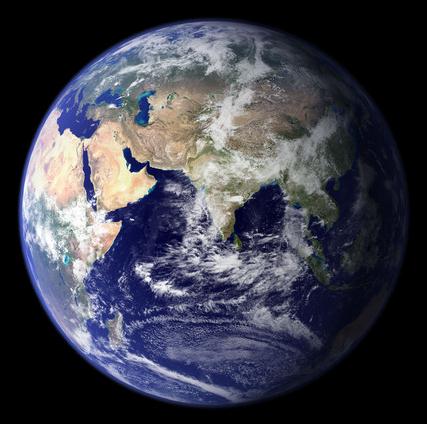38 F. high temperature in the Twin Cities Monday.
25 F. average high on December 22.
19 F. high on December 22, 2013.
.09″ rain fell yesterday.
0″ snow on the ground as of 7 PM Monday.
December 22 in Minnesota Weather History. Source: Twin Cities National Weather Service:
1996: Heavy snow fell across much of central Minnesota. The heaviest snow of 6 to 10 inches fell in central and eastern sections of area while snow amounts were in the 4 to 6 inch range in the north. Other snowfall totals included 6 to 8 inches across the Twin Cities metro area, 10 inches in Jordan, 8 inches at Cambridge, Forest Lake, Hutchinson and Montevideo, and 6 inches at St. Cloud, Glenwood and Redwood Falls. Counties affected include: Sherburne, Sibley, Stearns, Steele, Stevens, Swift, Todd, Waseca, Washington, Watonwan, Wright, and Yellow Medicine.
1983: The Twin Cities had a high of 17 degrees below zero.
1833: Warm spell at Ft. Snelling. Temperature reached 45 degrees.
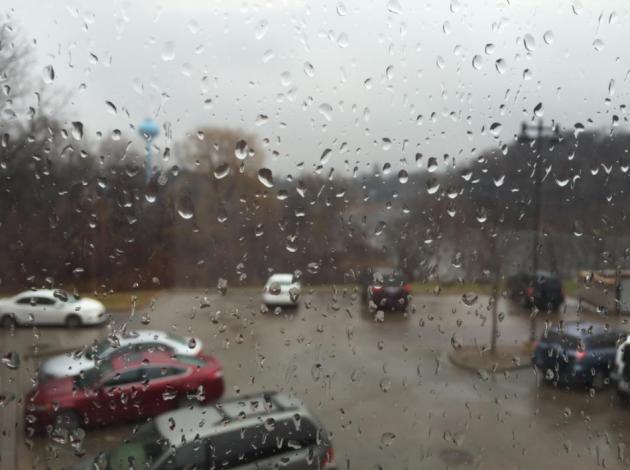
December Disconnect
In Meteorology 001 they teach you days of the week, the seasons and which finger to point to the weather map with. As a general rule December is colder than November, at least that’s how I was raised.
But not this year, not in Minnesota. As of Monday December’s average temperature (both highs and lows for the first 21 days) was 26F. The average temperature for all of November was 25.4F. A cold snap shaping up for the end of December will make it a close call, but December warmth and rain is trying to make up for a nasty November that was 8.3F colder than average.
A healthy 9.4 inches of snow fell in November. So far this month: 1.4 inches. More Memphis than Minneapolis.
As temperatures cool a rain-snow mix changes to snow today; an inch of slush possible on lawns, but most roads stay wet until tonight, when a little ice may form.
We dry out for Christmas – the leading edge of a parka-worthy cold front sparks a little snow Friday, but right now it doesn’t look like much. A subzero New Year is still possible across much of Minnesota but no big storms are brewing nearby for any post-Christmas travel plans.
Sorry Santa, I can’t promise a bright/white Christmas this year.

Who Will See A White Christmas This Year? As of yesterday NOAA NOHRSC 26.3% of the lower 48 was covered in snow. That’s down from 27.5% on November 22. Higher terrain in the Rockies will see snow for Christmas, so will the Upper Midwest, Great Lakes and northern New England.

Candy-Coating of Snow. By the time the atmosphere is cold enough for (all) snow most of the moisture will have cut off, although eastern Wisconsin may see a healthy 4-8″ dumping of white, with plowable snowfall amounts from near Madison to Green Bay by Christmas Eve. Keep that in mind if your travels take you well east of MSP tomorrow. 60-hour snowfall accumulation animation: NOAA and HAMweather.

Midwestern Travel Complications. A storm tracking from New Orleans to Detroit will send a burst of moderate to heavy snow from near St. Louis to the Quad Cities, Madison, Milwaukee and Green Bay, where some hefty (4-5″+) snowfall amounts are possible on Christmas Eve. Good timing.
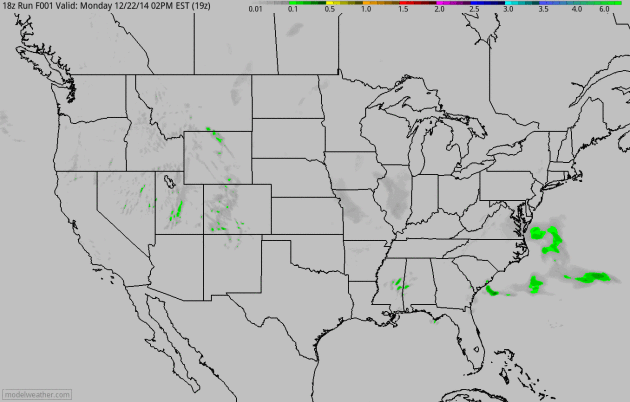
Christmas Eve Soaker Out East. Had this storm been brewing last winter (when December temperatures were consistently colder nationwide) we’d be looking at a foot or more of snow for much of the eastern USA. As it is there will be enough warm air in place for heavy rain from Atlanta to Raleigh, Washington D.C., New York and Boston. Flash flooding is possible with gusty winds capable of flight delays. But it won’t be a worst-case travel scenario for the I-95 megalopolis.

Slushy & Sloppy into Friday. The cold air keeps getting delayed – it now appears that afternoon highs may top freezing the next 3 days. A coating to an inch of slush is possible on lawns and fields today – most roads will probably stay wet with temperatures just above 32F. We dry out Christmas Eve and Christimas Day; latest European guidance a little more impressive for accumulating snow on Friday before we start to cool down over the weekend. Not sure about a high of 2F on New Year’s Eve, but there’s little question it’s going to be a numbing New Year.

Where’s the Cold Air? I was struck by yesterday’s temperature anomalies on Climate Reanalyzer; a sea of red across the Northern Hemisphere, with temperatures nearly 2F warmer than average for December 22. Much of the USA, central Canada, Europe and Asia is experiencing abnormal warmth for late December.
Image obtained using Climate Reanalyzer (http://cci-reanalyzer.org), Climate Change Institute, University of Maine, USA.

Extended Outlook: Another Thaw. Gaze at predicted (GFS) 500 mb winds on January 6, 2015 and you find yourself wondering just how cold it can get (or stay) with prevailing jet stream winds aloft howling from Vancouver. There’s no question we’ll see a period of much colder weather next week, but unlike last winter it won’t linger for week after week. A sudden strengthening of the west coast ridge would increase the potential for perpetual cold fronts east of the Rockies – I don’t see that, not yet, as a brewing El Nino pushes the storm track farther south than usual, preventing the ridge from reestablishing. Map: GrADS:COLA/IGES.
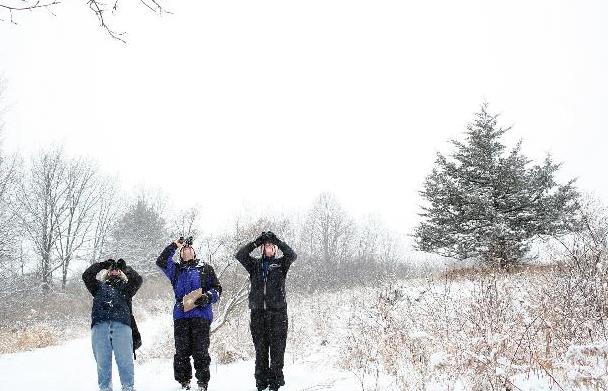
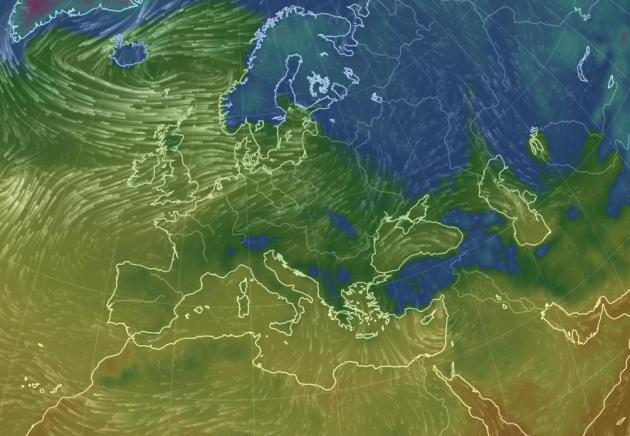
Hopeful Holiday Skiers Pray For Snow As Alps Resorts Feel The Effects of Warmer Weather. It has been unusually mild, almost springlike, across much of Europe in December and snow is at a premium. Here’s a clip from The Guardian: “…Head high or stay at home and, if you go, definitely wear a helmet. That is the message for skiers looking to hit the slopes this week after one of the worst starts to a season in living memory. As many of Europe’s leading ski resorts scramble to lure in skiers over the all-important Christmas period, there are fears some operators could be in grave financial difficulties if, as meteorologists suggest, the current lack of snow persists…” (Image: http://earth.nullschool.net).
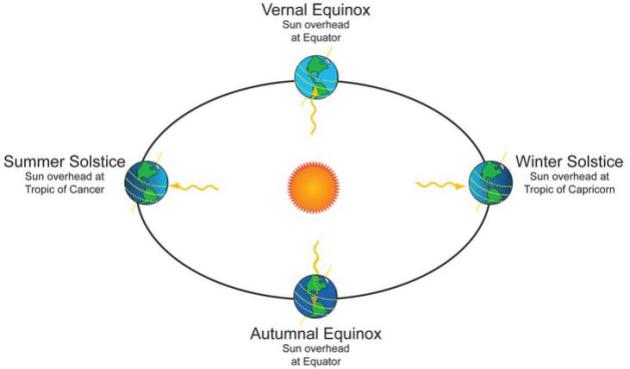
Sunday Night Was Not The Longest Night in Earth’s History After All. At least the writers at Vox know when to own up to a mistake, which they correct in this article; here’s a snippet: “…The Earth’s rotation is gradually slowing on an extremely long timescale, but on a shorter year-to-year basis, geologic factors can alter the speed as well. Data indicates that the rotation speed has actually sped up slightly over the past forty years (likely due to melting of ice at the poles and the resulting redistribution of the Earth’s mass), and before that, the trend was up-and-down for most of the 20th century — so, as far as we know, the longest night in Earth’s history likely occurred in 1912…” (Illustration: NASA JPL).
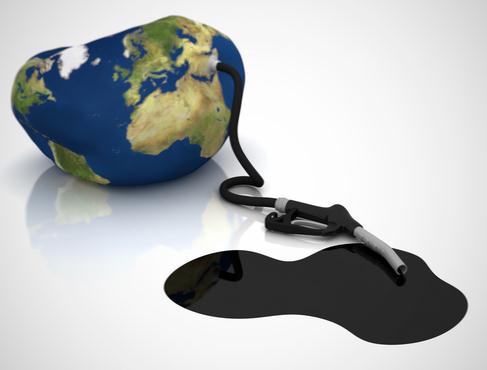
Ready For $20 Oil? A. Gary Shilling ponders how low the price of oil can go at Bloomberg View; here’s a clip: “…How low can oil prices go? In the current price war, the global market price needed to support government budgets isn’t really the main issue. Nor are the total costs for exploration, drilling and transportation. What matters are marginal costs — the expense of retrieving oil once the holes have been drilled and pipelines laid. That number is more like $10 to $20 a barrel in the Persian Gulf, and about the same for U.S. shale-oil producers. The estimated $50 to $69 a barrel break-even point for most new U.S. shale-oil production is less relevant…” (File image: Clean Technica).

I Work At Sony Pictures. This Is What It Was Like After We Got Hacked. Fortune has the first-person account of what really happened during the worst case of corporate cyber-hacking on record; here’s the intro: “An employee* in the Los Angeles office of Sony Pictures Entertainment SNE 0.78% opened up to Fortune about the personal ordeal they went through following revelations of North Korea’s alleged cyber attack on the company. What follows is their words, condensed and edited for clarity…”

TODAY: Rain/snow mix changes to mostly wet snow. Slushy lawns, wet roads. Winds: N 15. High: 35
TUESDAY NIGHT: Light snow tapers – a few icy patches. Low: 31
CHRISTMAS EVE: Mostly cloudy, better travel statewide. High: 35
CHRISTMAS DAY: Dreaming of a gray Christmas? Lot’s of clouds. Wake-up: 28. High: 34
FRIDAY: Quick shot of PM show possible. Wake-up: 29. High: 32
SATURDAY: More clouds than sun, colder. Wake-up: 17. High: 22
SUNDAY: Peeks of sun, still seasonably chilly. Wake-up: 11. High: 23
MONDAY: Chance of light snow, flurries. Wake-up: 15. High: 19
Climate Stories…
* With 2014 coming to a close, weather organizations and independent researchers have crunched the numbers and found that 2014 will almost certainly go down in history as the hottest year on record. Global land and sea surface temperatures for the year-to-date have already broken records, and December is seeing above-average temperatures as well.
* 2014 marks only the latest in a string of years with record-breaking heat, however. It has been 358 months since we had a cooler-than-average month, and the fifteen hottest years on record have all come since 1997.
* Assuming current trends hold throughout the last week of this month, 2014 has set a new global temperature record despite the fact that it is also an El Niño Southern Oscillation (ENSO)-neutral year.
– bullet points above courtesy of Climate Nexus.

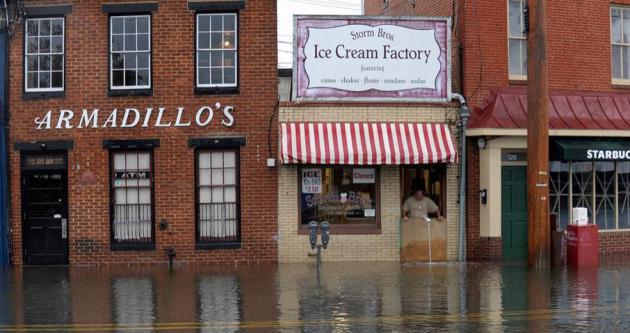
D.C. Has Passed Sea Level Rise “Tipping Point”, More Cities to Follow: Study. Meteorologist Andrew Freedman has the story at Mashable; here’s an excerpt: “…Sweet and co-author Joseph Park, also of NOAA, used tide-gauge data and mainstream sea-level-rise projections, to show that, in many places, the frequency of coastal flooding events is rising far faster than the mean sea level is. To date, the mean sea level rise is what has captured the most attention. “It’s not so much the mean that we are concerned about than it is the frequency of these lesser extremes,” Sweet said. In some cases, less than a foot of mean sea level rise may be all that is required to reach the threshold level of 30 days per year of nuisance-type flood events, he said. Such floods affect infrastructure that lies just 1 to 2 feet above sea level, which in many cases, includes critical shoreline roads, military bases, airports and water-treatment facilities…”
Photo credit above: “Sveinn Storm, owner of Storm Bros. Ice Cream Factory, surveys flood water outside his store in Annapolis, Md., on Oct. 30, 2012, in the aftermath of Superstorm Sandy.” Image: Susan Walsh/Associated Press.

Warming World’s Rising Seas Wash Away Some of South Florida’s Glitz. The Sydney Morning Herald takes a look at what rising sea levels are already doing in Miami; here’s an excerpt: “…While much of the nation argues about whether or not California’s once-in-a-thousand-year drought or the $US71 billion devastation of Hurricane Sandy might have been caused or exacerbated by climate change – or indeed whether or not the phenomenon even exists – in Southern Florida today you wander about in the water and see what it looks like when rising seas hit a modern western city. As with every other serious issue facing the United States, the acceptance of climate science has fallen down along partisan lines…”
Photo credit above: “Rising concern: Geologist Harold Wanless takes a stroll through flooded Miami streets.”
The average temperature in the Arctic country has risen by more than 2C since 1847, twice as fast as the global average.
Warming is most extreme during the festive month, which is now 4.8C hotter than it was before the industrial era, Finland’s top scientists have found.
“In future, if the temperature rises, we will not have snow cover in December,” researcher Santtu Mikkonen told RTCC.
– See more at: http://www.rtcc.org/2014/12/22/fast-finland-warming-means-blue-christmas-for-santa/#sthash.h3Gk1l2O.dpuf
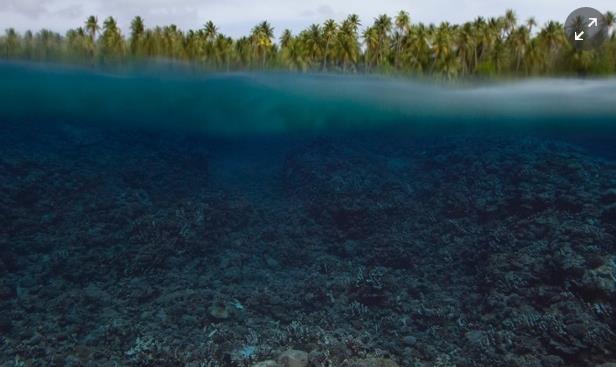
Major Coral Bleaching In Pacific May Become Worst Die-Off in 20 Years, Say Experts. The Guardian has the story; here’s the introduction: “Warm sea temperatures are causing massive coral reef die-off across the Northern Pacific in what could be the start of an historic bleaching event around the world. Scientists warn extreme sea temperatures could cause a “historic” coral reef die-off around the world over the coming months, following a massive coral bleaching already underway in the North Pacific. Experts said the coral die-off could be the worst in nearly two decades. Reports of severe bleaching have been accumulating in the inbox of the US National Oceanic and Atmospheric Administration’s (NOAA) Coral Reef Watch programme since July…”
Photo credit above: “The destruction of coral reefs will make these vital barriers for the land less effective against the effects of climate change – such as sea level rise and storms.” Location: Arno atoll, Marshall Island. Photograph: Remi Chauvin.

Fast Finland Warming Means Blue Christmas for Santa. Far northern latitudes are first to feel the accelerating warming; as described at RTCC: “…Rapid warming across Finland means that even Santa’s hopes for a white Christmas are shrinking. The average temperature in the Arctic country has risen by more than 2C since 1847, twice as fast as the global average. Warming is most extreme during the festive month, which is now 4.8C hotter than it was before the industrial era, Finland’s top scientists have found…”
Photo credit: Visit Finland via Flickr.

12 Ways To Deal With A Climate Change Denier At The Holidays. Or any day for that matter. Here’s an excerpt from Australia’s The Conversation: “…While there is likely to be some wiggle room in the exact percentage, it’s fair to say that consensus is very high. And if 97 (or even nine) doctors told you that you had life-threatening but treatable cancer, would you act? Or would you keep looking until you found one doctor who told you not to worry about it, that the cancer isn’t serious, and that it’s all just a medical conspiracy to sell you chemotherapy?…” (Illustration: Skeptical Science).
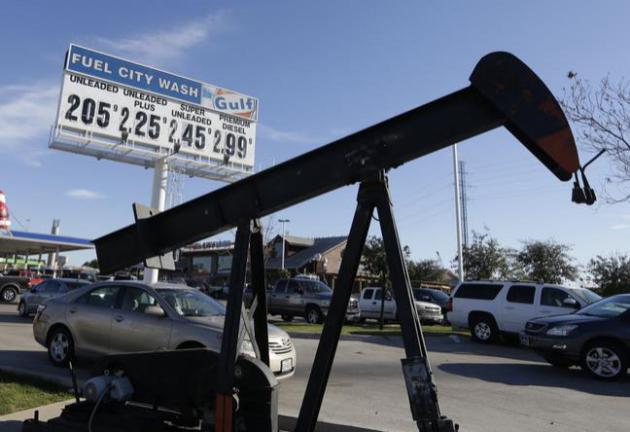
Oil, Coal and Gas Soon Worthless? I wouldn’t bet on this unfolding anytime soon, but history has a way of surprising most people. Here’s an excerpt from a story at Deutsche Welle: “…World Bank President Jim Yong Kim earlier this year encouraged governments and business to consider withdrawing funding from oil, gas and coal companies. And the World Bank in November announced it will only fund coal projects in developing countries in extreme cases. “Climate change is threatening assets,” said Georg Kell, director of UN Global Compact in an interview with DW. And investors are beginning to grasp this, he added…”
The average temperature in the Arctic country has risen by more than 2C since 1847, twice as fast as the global average.
Warming is most extreme during the festive month, which is now 4.8C hotter than it was before the industrial era, Finland’s top scientists have found.
“In future, if the temperature rises, we will not have snow cover in December,” researcher Santtu Mikkonen told RTCC.
– See more at: http://www.rtcc.org/2014/12/22/fast-finland-warming-means-blue-christmas-for-santa/#sthash.h3Gk1l2O.dpufOil, Coal and Gas Soon Worthless? I wouldn’t bet on this unfolding anytime soon, but history has a way of surprising most people. Here’s an excerpt from a story at Deutsche Welle: “…World Bank President Jim Yong Kim earlier this year encouraged governments and business to consider withdrawing funding from oil, gas and coal companies. And the World Bank in November announced it will only fund coal projects in developing countries in extreme cases. “Climate change is threatening assets,” said Georg Kell, director of UN Global Compact in an interview with DW. And investors are beginning to grasp this, he added…”
Photo credit above: “In this Dec. 15, 2014 file photo, vehicles line up to take advantage of low gas prices at the Fuel City gas station in Dallas. The collapse of oil prices this year has become a huge topic of worry and comfort for investors.” (AP Photo/LM Otero, File)
